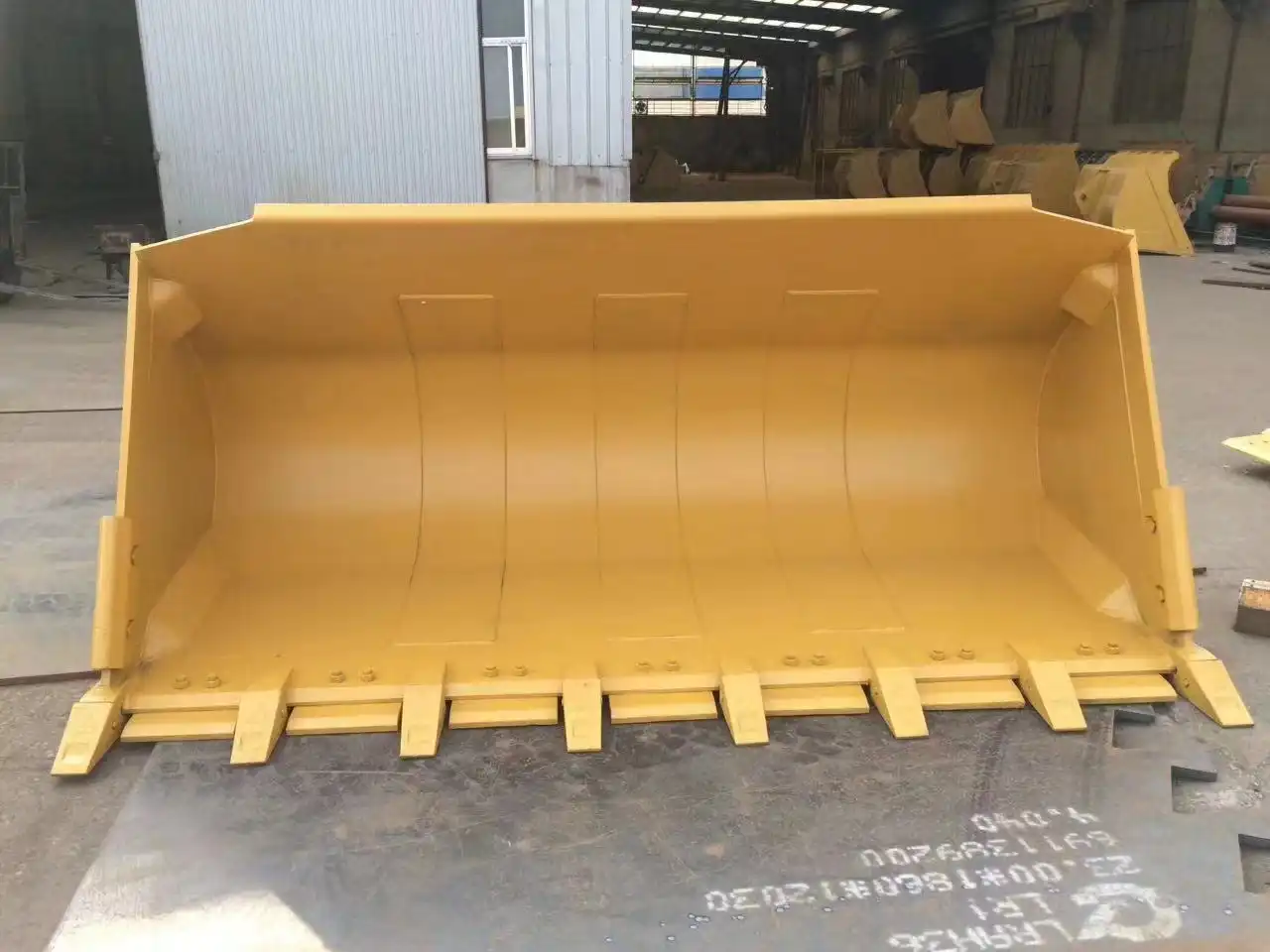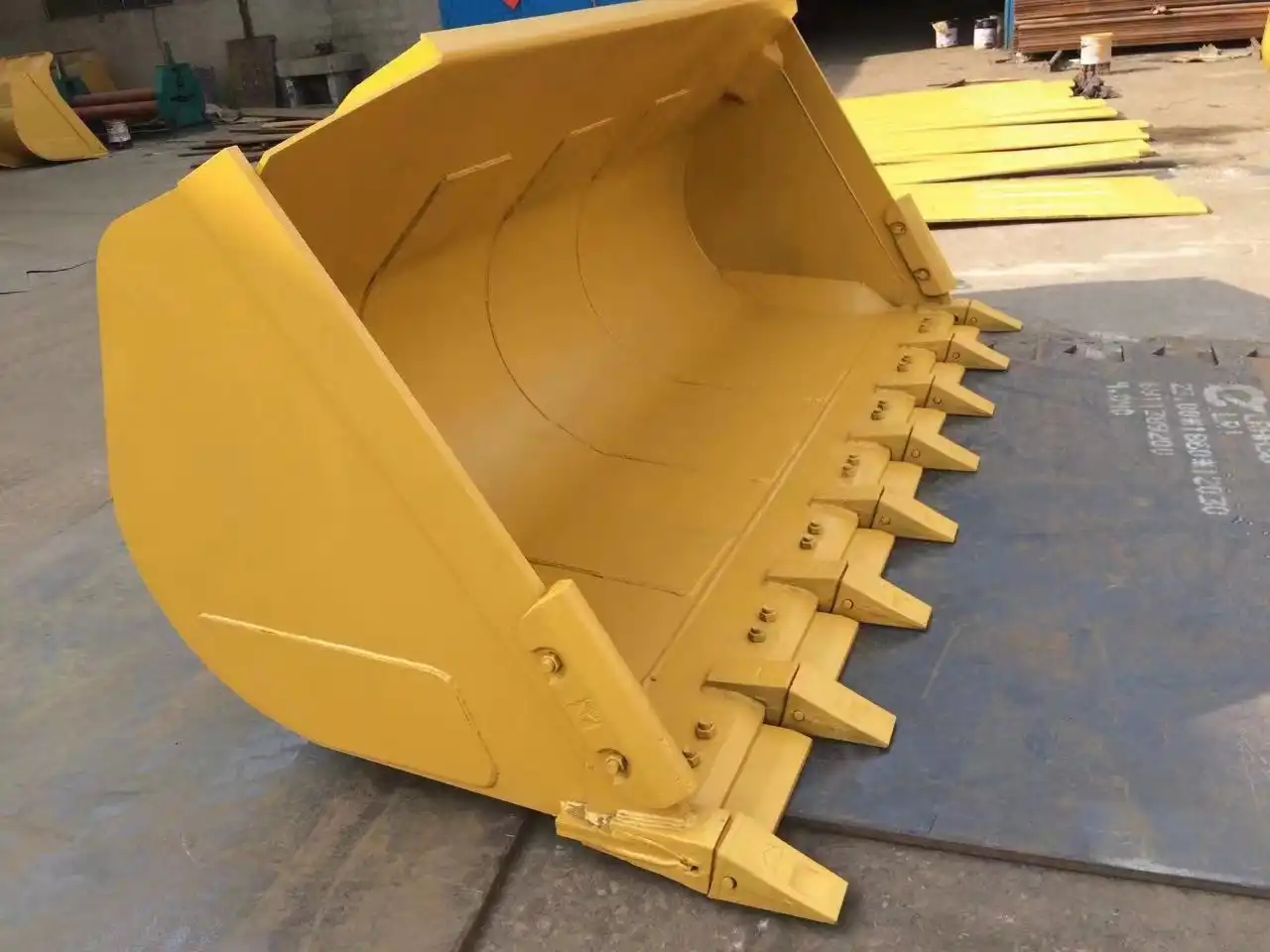Front End Loader Bucket Design
When it comes to heavy machinery performance, the front loader bucket stands as one of the most critical components determining operational efficiency and productivity. This essential attachment transforms raw mechanical power into precise material handling capabilities, making it indispensable across construction sites, mining operations, and various industrial applications. Understanding the intricate design principles behind these robust tools reveals why proper engineering makes the difference between mediocre performance and exceptional results.
Material Selection: High-Strength Steel for Durability
The foundation of any exceptional front end loader bucket lies in the careful selection of materials that can withstand the punishing demands of heavy-duty applications. High-strength steel alloys form the backbone of modern bucket construction, offering the perfect combination of tensile strength, impact resistance, and weldability that engineers require for optimal performance.
Advanced Steel Compositions
Contemporary front end loader bucket manufacturing relies heavily on specialized steel grades that have been specifically developed for earthmoving applications. These alloys typically incorporate elements such as manganese, chromium, and molybdenum to enhance their mechanical properties and resistance to wear. The selection process involves careful consideration of the intended application, with different steel compositions chosen based on whether the bucket will primarily handle abrasive materials like sand and gravel or more challenging substances like fractured rock.
The microstructure of these steels plays a crucial role in their performance characteristics. Through controlled cooling processes and heat treatment, manufacturers can achieve the desired balance between hardness and toughness, ensuring that the bucket can resist both gradual wear and sudden impact loads. This metallurgical precision extends the operational life of the equipment while maintaining structural integrity under stress.
Wear-Resistant Properties
Abrasion resistance represents one of the most critical performance metrics for front loader bucket materials. The constant contact with coarse materials creates a challenging environment where even minor improvements in wear resistance can translate to significant increases in operational lifespan. Modern steel formulations incorporate hardening agents and specialized surface treatments that create a protective barrier against abrasive wear.
The relationship between material hardness and impact resistance requires careful engineering balance. While harder steels offer superior abrasion resistance, they can become brittle under sudden shock loads. Advanced alloy development has addressed this challenge through the creation of steels that maintain their toughness even at higher hardness levels, providing the best of both worlds for demanding applications.
Corrosion Prevention
Environmental factors such as moisture, chemical exposure, and temperature fluctuations can significantly impact the longevity of loader buckets. Modern material selection incorporates corrosion-resistant properties that help maintain structural integrity even in harsh operating conditions. Specialized coatings and surface treatments work in conjunction with the base steel to create a comprehensive protection system.
The economic impact of corrosion on heavy equipment cannot be overstated. By selecting materials with inherent corrosion resistance and applying appropriate protective measures, manufacturers can significantly extend the service life of their products while reducing maintenance requirements for end users. This approach aligns with the industry's growing emphasis on total cost of ownership rather than initial purchase price.

Structural Reinforcement
The structural integrity of a front loader bucket depends on sophisticated reinforcement strategies that distribute loads efficiently while minimizing weight penalties. Modern engineering approaches utilize advanced stress analysis techniques to identify critical load paths and optimize reinforcement placement for maximum effectiveness.
Strategic Rib Placement
Reinforcement ribs serve as the skeletal framework that maintains front end loader bucket shape under load while providing crucial structural support. The positioning and orientation of these ribs require careful analysis of stress patterns that occur during typical operating conditions. Engineers utilize finite element analysis to map stress concentrations and design rib configurations that effectively redirect forces away from vulnerable areas.
The geometry of reinforcement ribs has evolved significantly from simple straight configurations to complex curved profiles that follow natural stress flow patterns. This evolution reflects a deeper understanding of how forces propagate through the bucket structure and how strategic geometry can enhance load distribution. The result is reinforcement systems that provide superior strength while using less material than traditional approaches.
Weld Joint Optimization
The quality and design of weld joints represent critical factors in overall front loader bucket performance and longevity. Modern welding techniques and joint designs ensure that connections between structural elements can withstand the dynamic loads encountered in heavy-duty applications. Advanced welding procedures incorporate preheating, controlled cooling, and post-weld treatment to achieve optimal joint properties.
Joint design has progressed beyond simple butt welds to include sophisticated configurations that distribute stress more effectively across the connection. These advanced joint designs reduce stress concentrations that could lead to fatigue failures while maintaining the structural continuity necessary for load transfer. The integration of automated welding systems has further improved consistency and quality in these critical connections.

Functional Adaptability
Modern front end loader buckets must accommodate a diverse range of applications and materials, requiring design flexibility that enables optimal performance across varying operational requirements. This adaptability extends from basic geometric considerations to sophisticated features that enhance operational efficiency and versatility.
Capacity Optimization
Front loader bucket capacity represents a critical design parameter that directly impacts operational efficiency and productivity. The relationship between capacity and performance involves complex interactions between bucket geometry, material characteristics, and operational techniques. Engineers must balance the desire for maximum capacity with practical considerations such as machine stability and material flow characteristics.
The shape of the bucket interior plays a crucial role in determining effective capacity and material retention. Modern designs incorporate sophisticated curves and angles that promote efficient material flow while maximizing volume utilization. These geometric optimizations can significantly improve loading efficiency and reduce cycle times, directly impacting operational productivity.
Cutting Edge Configurations
The cutting edge represents the primary interface between the front end loader bucket and the material being handled, making its design crucial for operational effectiveness. Different applications require specialized edge configurations that optimize penetration, wear resistance, and material retention. The ability to accommodate various cutting edge systems enhances the versatility of the basic bucket design.
Replaceable cutting edge systems have become standard features that extend operational life while reducing maintenance costs. These systems allow operators to quickly change cutting edges based on application requirements or wear conditions, maximizing equipment utilization. The mounting systems for these edges must balance ease of replacement with secure retention under demanding operating conditions.
FAQ
①What factors determine the optimal bucket capacity for specific applications?
Bucket capacity selection depends on machine specifications, material density, operational requirements, and site conditions. The rated load capacity of the loader, unloading height requirements, and the specific gravity of handled materials all influence the optimal capacity choice.
②How does material selection impact bucket longevity?
High-strength steel alloys with proper heat treatment significantly extend bucket life by resisting wear and impact damage. The choice of steel grade should match the intended application, with harder alloys for abrasive materials and tougher grades for impact-heavy operations.
③What maintenance practices maximize bucket performance?
Regular inspection of cutting edges, prompt replacement of worn components, proper cleaning after use, and adherence to operational guidelines help maintain optimal performance. Monitoring for crack development and addressing issues early prevents major structural problems.
④How do reinforcement strategies affect bucket weight and performance?
Modern reinforcement techniques optimize strength-to-weight ratios through strategic placement of ribs and advanced welding techniques. Proper reinforcement improves load distribution while minimizing unnecessary weight that could impact machine performance.
⑤What role does bucket geometry play in operational efficiency?
Bucket shape affects material flow, penetration characteristics, and filling efficiency. Optimized geometry reduces cycle times, improves material retention, and enhances overall productivity while maintaining structural integrity under load.
The integration of advanced materials, optimized structural configurations, and adaptable design features creates front loader buckets that can meet the diverse requirements of today's heavy industry applications. This comprehensive approach to design ensures that operators can rely on their equipment to perform consistently under challenging conditions while delivering the efficiency and productivity that modern projects demand.
As the industry continues to evolve, the principles of material excellence, structural optimization, and functional adaptability will remain fundamental to bucket design. The ongoing development of new materials, manufacturing techniques, and design methodologies promises even greater performance improvements in future generations of loader bucket technology.
TianNuo Machinery's commitment to engineering excellence in front end loader bucket design reflects these industry-leading principles. Our comprehensive approach to material selection, structural reinforcement, and functional adaptability ensures that every bucket meets the demanding requirements of modern heavy industry applications. With rated loads up to 5000 kg, unloading heights reaching 3090 mm, and maximum breakout forces of 170 kN, our buckets deliver the performance and reliability that professionals demand.
For detailed information about our front loader bucket specifications and how our engineering expertise can benefit your specific applications, we invite you to contact our technical team at tn@stnd-machinery.com. Our experienced engineers are ready to discuss your requirements and recommend the optimal bucket configuration for your operational needs.
References
- Smith, J.R. "Advanced Materials in Heavy Equipment Design." Journal of Construction Engineering, Vol. 45, No. 3, 2023, pp. 234-248.
- Anderson, M.K. "Structural Analysis of Earthmoving Equipment Components." International Conference on Heavy Machinery, 2024, pp. 156-171.
- Chen, L.W. "Wear Resistance in Steel Alloys for Construction Equipment." Materials Science and Engineering Review, Vol. 78, No. 2, 2023, pp. 89-103.
- Thompson, R.A. "Load Distribution Optimization in Bucket Design." Heavy Equipment Design Quarterly, Vol. 29, No. 4, 2024, pp. 45-62.
- Martinez, C.D. "Functional Adaptability in Modern Loader Attachments." Construction Equipment Technology, Vol. 33, No. 1, 2024, pp. 78-91.
About Author: Arm
Arm is a leading expert in the field of specialized construction and railway maintenance equipment, working at Tiannuo Company.

